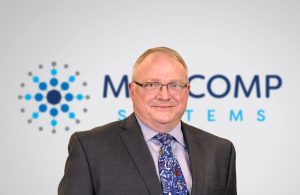This article was originally posted on HISTALK
Jay Anders, MS, MD is chief medical officer of Medicomp Systems of Chantilly, VA.
If I were king of health IT, I would find great joy in sitting at the head of a banquet table before all my subjects, casting judgment on the most current health IT trends. Like the king in Bud Light’s recent commercial series, I’d love to lead a hearty “dilly dilly” cheer for innovations that make it easier for physicians to practice medicine, while banishing the less worthy trends to the “pit of misery.”
Health IT king or not, I see the following 2018 health IT-related trends falling into two distinct buckets.
Deserving Dilly Dilly Cheers
Interoperability
At long last, health systems seem to be accepting the inevitability of interoperability. Organizations are resigned to the fact that it’s no longer reasonable to refuse to share patients’ clinical records with cross-town competitors. Instead, everyone needs to work together to make systems talk. The growing acceptance of standards such as FHIR are also helping to advance interoperability efforts. I predict significantly more progress in this area over the next three to five years.
Collaboration with Physicians
More health IT companies are seeking input from physician users as they design, build, and test their solutions. Vendors are realizing that the creation of user-friendly clinical interfaces can no longer be an afterthought and that the delivery of physician-friendly solutions must be a priority. By collaborating with physicians, vendors better understand required clinician workflows, existing bottlenecks, and the processes that are critical to patient safety.
For example, physicians can provide insights into common clinician thought processes and clarify why one workflow may be preferred over another. Physicians understand what tasks are traditionally performed by a medical assistant, how long a particular procedure might take, and when and why a clinician cannot be looking at a computer screen. By embracing physician collaboration, health IT companies are better-equipped to create innovative solutions that work and think like physicians and enhance provider satisfaction.
Shared Chart Ownership
Not too many years ago, most people — including patients — believed that each physician owned his or her own patient charts. That mindset is changing, and today, most providers and patients realize that everyone involved in a patient’s care — including the patient’s family — needs to share clinical data. The growing recognition that information must flow seamlessly between caregivers is a huge step in the right direction and advances industry efforts to get the right information to the right person at the right time.
Banished to the Pit of Misery
Data Dumping
More data is being exchanged between providers thanks to better interoperability tools and growing enterprise acceptance. Unfortunately, many organizations continue to struggle to figure out what to do with all the data. More health systems have the ability to dump buckets of data on providers, yet few physicians have the tools to efficiently organize the data into actionable information that enhances patient care. Don’t look for any widespread fixes in the short term.
Administrative Burdens
Healthcare still has not figured out how to reduce the administrative burdens of practicing medicine. Physicians continue to be frustrated and disillusioned with their careers, thanks to ever-changing regulatory and reimbursement requirements that require adjustments to clinical workflows. Don’t expect big improvements any time soon, nor major legislation that streamlines existing healthcare policies and regulations. Instead, physicians will be forced to continue addressing numerous tasks that distract from the delivery of patient care.
AI Hype
Despite all the hype, don’t look to artificial intelligence and machine learning technologies to solve all the industry’s data and reporting problems. The bottom line is that these technologies are still insufficiently mature for healthcare applications. Providers would of course love solutions that leverage natural language processing (NLP). AI will have the ability to convert dictated chart notes to free text and free text to data that is actionable for clinicians. Unfortunately, the error rates for converting speech to text to data are, at best, between eight and 10 percent. Give these technologies at least two to three more years before they’re ready able to truly enhance clinical decision-making at the point of care and move out the pit of misery and earn dilly dilly cheers.
Ah, if only I were the Health IT King and had the power to fix inefficient systems that impair clinician productivity. I cheer dilly dilly to all who seek to embrace the knowledge and expertise of physicians to deliver highly-usable solutions. I am confident that their efforts will make physicians happier and more productive and enhance the delivery of quality patient care.